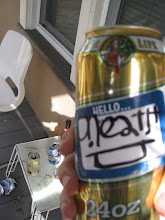After having done more research on the topic of Video art I’ve been able to narrow in on some important aspects that I had not previously thought through. The primary pieces that I have investigated more closely are footage, audio, and installation.
After creating two music videos I learned a lot about what I was actually interested in. Previously I wanted to capture everyday mundane scenes, this is still so but I decided to refine the qualifications for which shots to use. The shots that were most prevalent from my first collection of footage were shots that focused on objects in transport. This was interesting to me because the majority of the subjects I focused on were moving somewhere. I think these shots look aesthetically the best. An example of this would be planes passing by, trains moving by, people going by and also shots from moving objects like being on/in a plane, train, car, foot etc.
I had to confront this pattern of objects in motion by investigating what it was about it that interested me the most. The conclusion that I came to is that when in transit our view of the world around us becomes extremely shifted. People on public transportation have headphones in and they close their eyes. On planes conversation is usually kept to a minimum to allow passengers to enter a bubble, and a film is played to keep our attention on something. Our patience, our attention to details, and the bubble many of us place ourselves inside to deal with the discomforts connected to transit is what my project will focus on by highlighting the everyday things around us in those scenarios.
My project zooms in on the beauty that can exist in any locale whether urban, suburban, or country. These are the types of places people find themselves traveling through during commutes. To make the piece consistent I decided that I would only capture footage when I was on my way somewhere. This places me on the same level as any other commuter, and the shots I will/have attained will look familiar to people in several similar locales.
In order to maximize my efforts I’ve been trying to frame each shot to look considerably formal and well framed. The shots need to be beautiful themselves in order to not take away from the subject being filmed. This idea is something I feel is related to minimalist photography. By framing something as mundane as a garage door incredibly well, will in effect make that garage door appear more interesting. This is important to me because I want my footage to look quality and help send my message to the viewer.
Audio is another aspect of my project that wasn’t previously acknowledged. For this piece of the project I want to leave the original ambient noise of the shots alone. The natural ambient noise that couples my shots are important because they can tell a lot such as if the scene was crowded, empty, or serene.
Ambient noise will not be the only audio track in my piece. I want to take samplings of conversation, exclamations, shouting that I encounter while I’m working and then place those bits throughout the piece. I think that this will set up a more interesting dialogue between the footage and the audio. I also believe that these everyday sounds will ring true to anyone who has ever been in a similar environment.
For the installation set up I want to have a stack of televisions. Seeing a lot of early video artists use this technique inspired me, considerably Nam June Paik’s Electronic Super Highway. In that piece his has perhaps a hundred televisions all stacked in the shape of the U.S. I think this stacking looks really interesting and it adds a whole new dynamic to my concept.
I had to start researching television as a medium as well as a medium for art to understand the context I would be placing my work. This opened me up to the dialogue many earlier video artists were interested in. The television deals with the idea of consumer culture, corporate control, and what advertisers want us to look at. The television is also a tool for gazing, watching, observing and even mindless staring. I want my presentation to work this way. I feel like the television is such a loaded object in our society that it will not only increase the viewers’ interest but will deliver my message from juxtaposition.
I will place a couch in front of the television stack to increase my message. I think that if they have the provided headphones on, while on a couch in front of multiple screens they may understand what I’m getting at better. They will be transported into my world from the world I’ve physically set up for them. I think this duality will strengthen my message as well as providing a place for them to hopefully make a connection with the intent of my project.
I want people to be reminded to look and absorb their surroundings. People go on vacations to escape their own reality, but I believe simple shifts in the way we look at our current surroundings can improve your day-to-day activities. Their so much beauty in our urban environments that goes unnoticed. Power lines, flashing lights, gutter drains, etc are all man made things, but this does need to make them bad. I want people to look at the world with a sharper eye and zoom in on the intricacies of our man made surroundings and embrace them.
